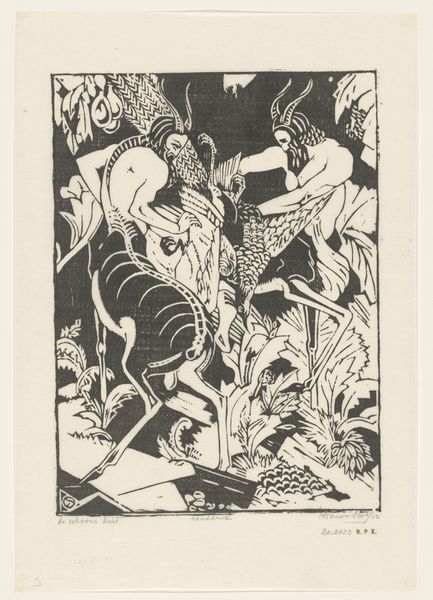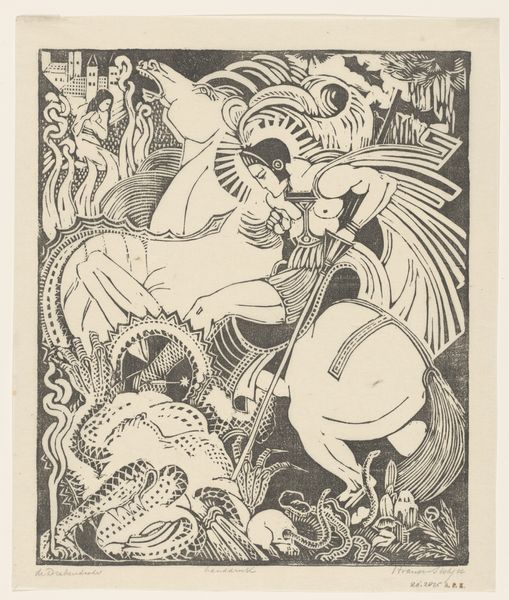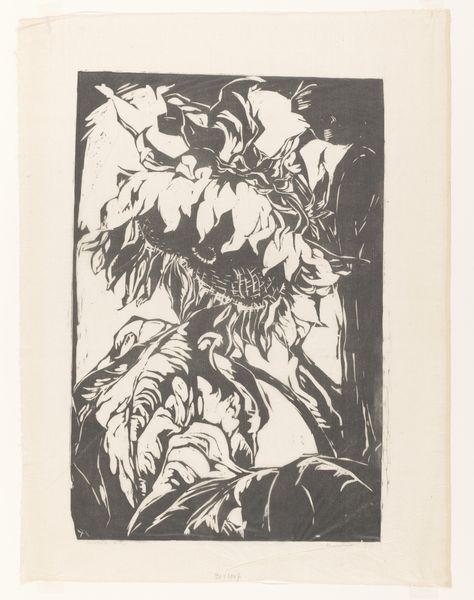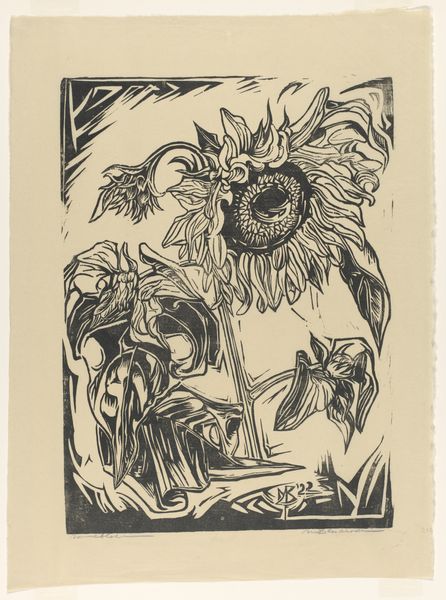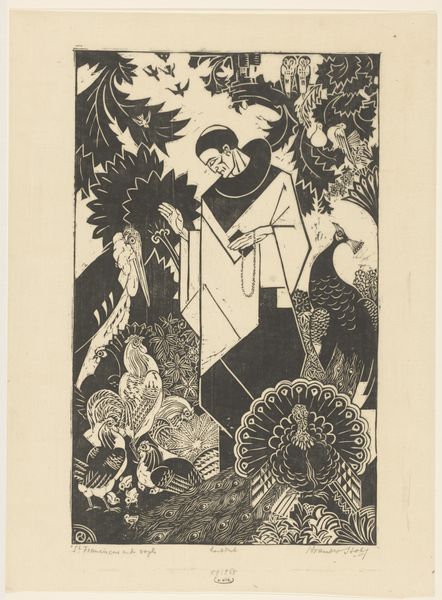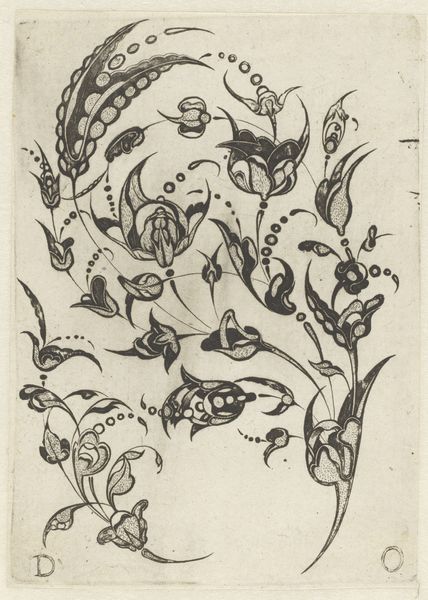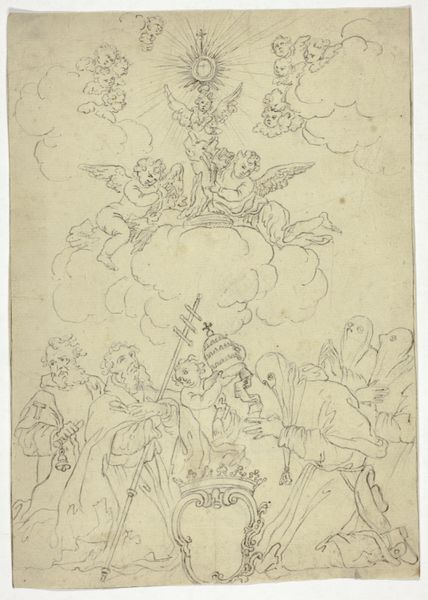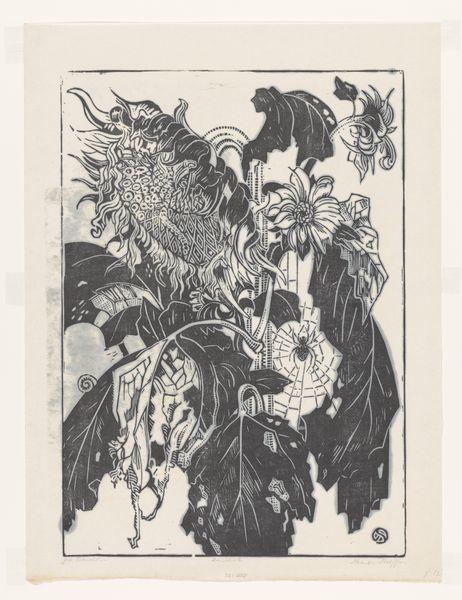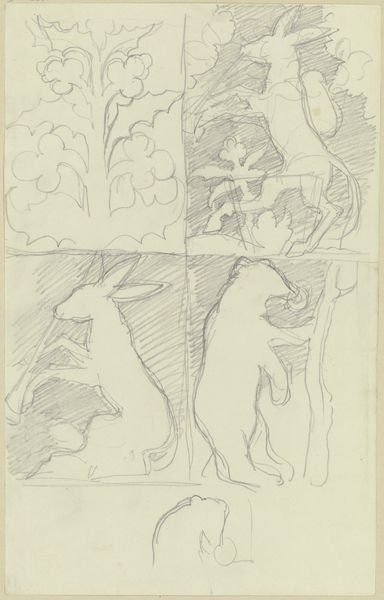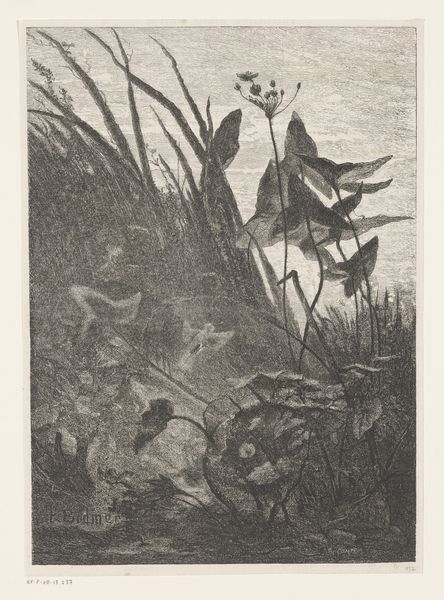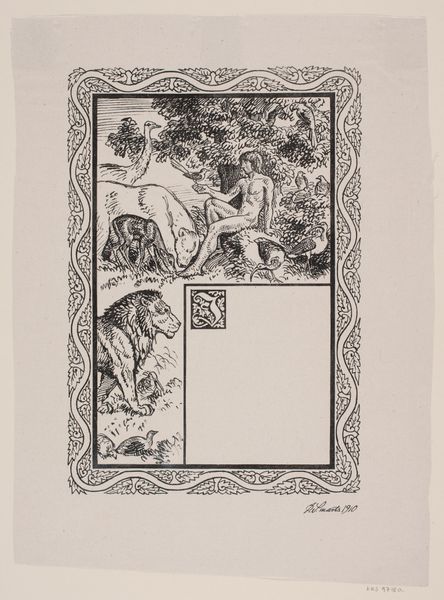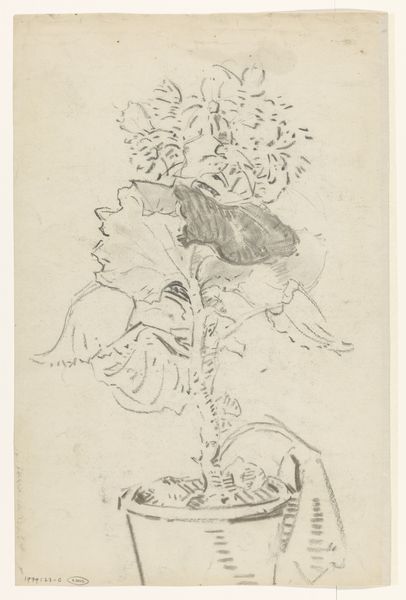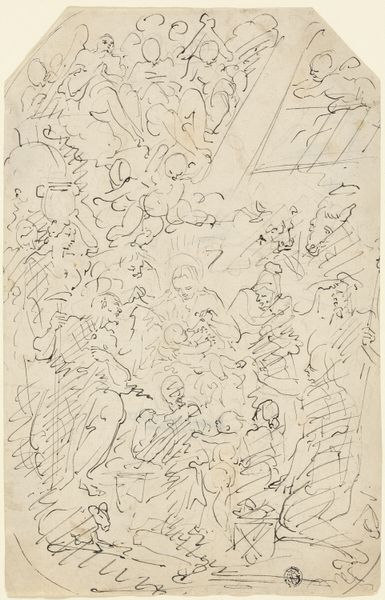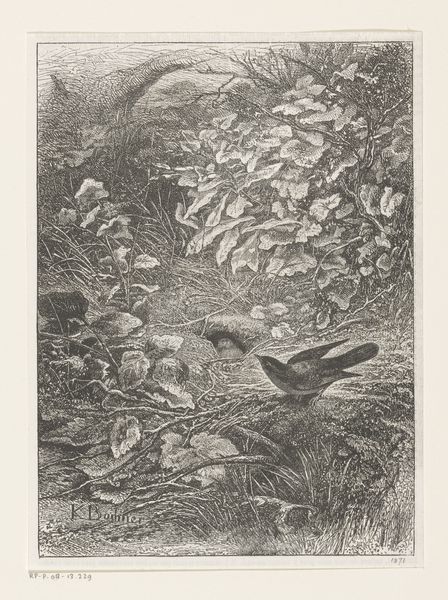
Dimensions: height 263 mm, width 196 mm
Copyright: Rijks Museum: Open Domain
Theo van Hoytema created this lithograph around 1893, depicting a two-headed eagle surrounded by a variety of birds. Lithography is a printmaking technique that relies on the resistance between grease and water. The artist likely drew this image with a greasy crayon onto a stone or metal plate, which was then chemically treated so that ink would adhere only to the drawn areas. The dense composition and linear quality of the print highlight the directness of the artist's hand. The black ink, rich in pigment, adds depth and contrast to the image, emphasizing the textures of the birds' feathers. As a mass-reproducible medium, lithography played a significant role in disseminating images and ideas in the late 19th century. Hoytema’s choice of this technique suggests a desire to reach a broader audience. The print's overt political symbolism, referencing the 'Arnhemsche Congres,' reflects the artist's engagement with social issues of the time. By considering the material and making of this print, we can see how Hoytema blurred the boundaries between art, craft, and social commentary.
Comments
No comments
Be the first to comment and join the conversation on the ultimate creative platform.
